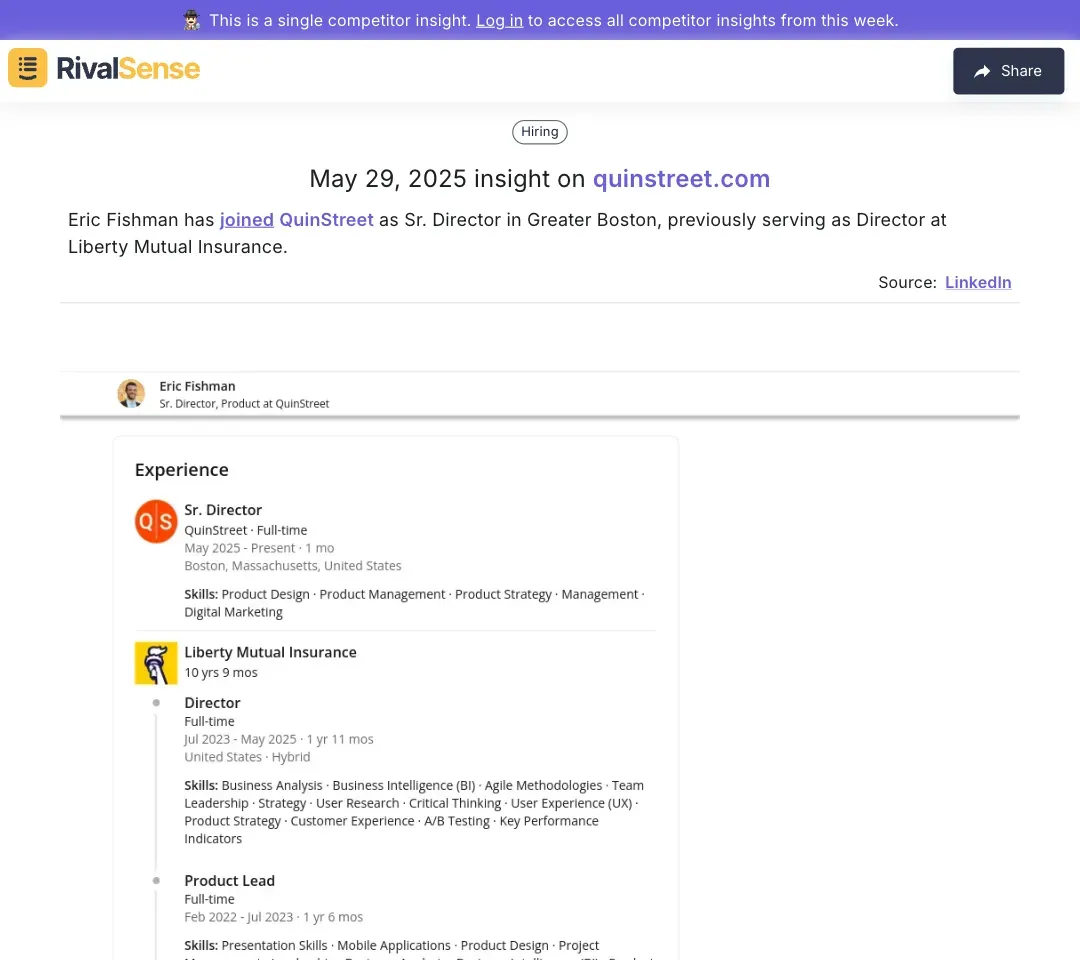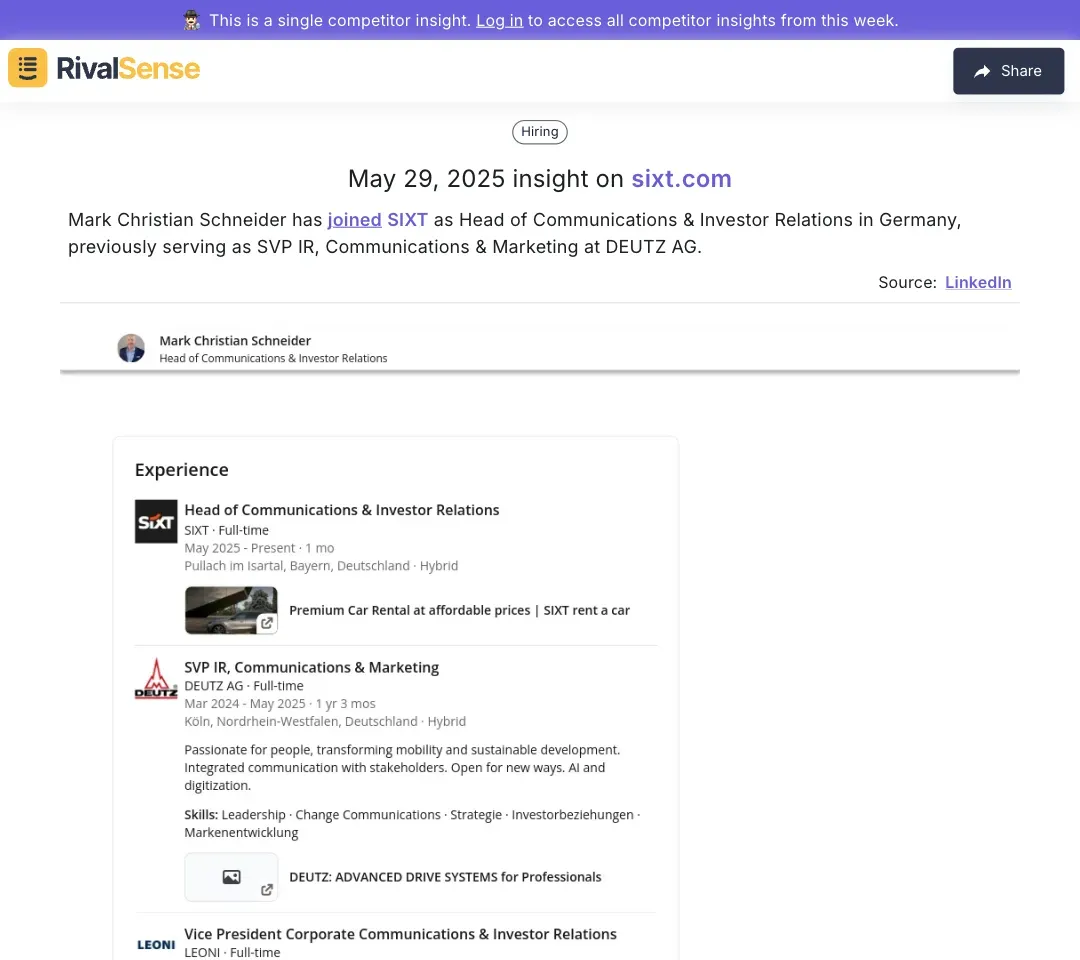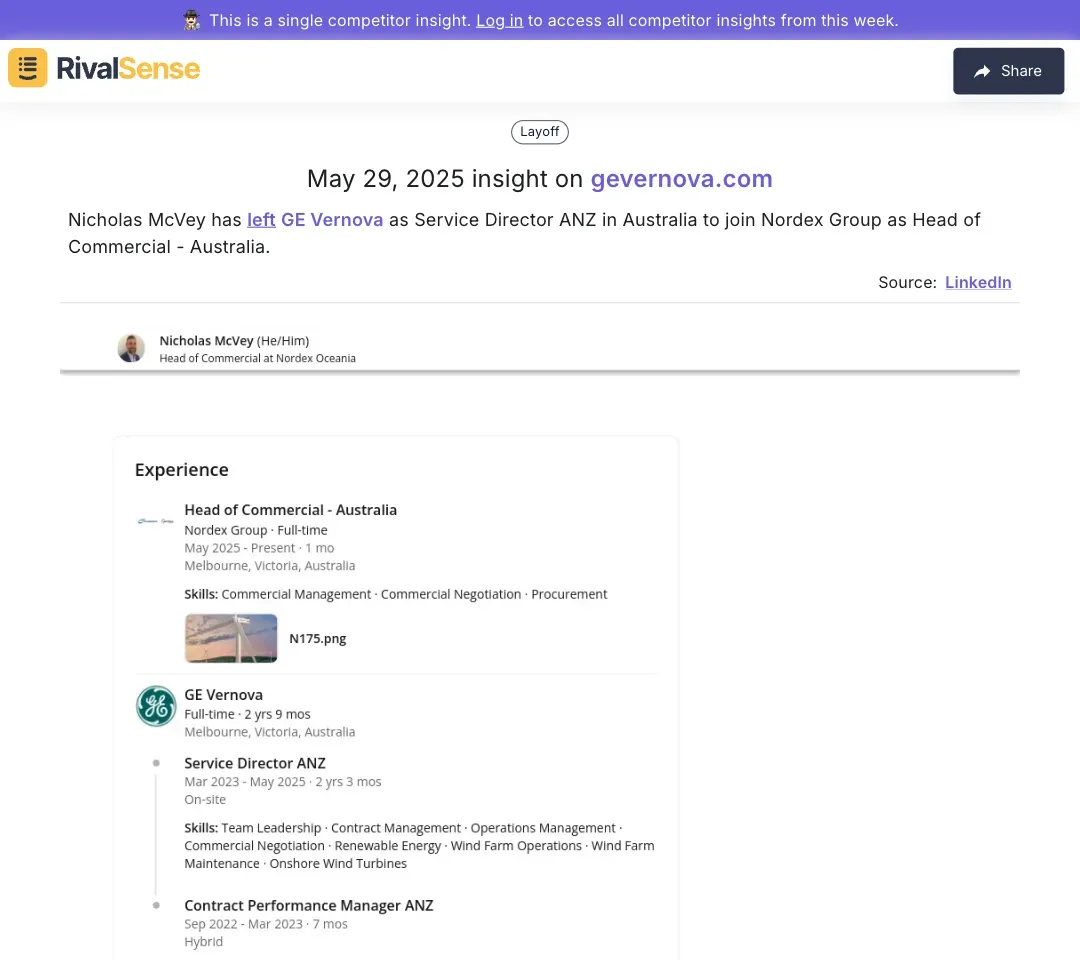Data-Driven Insights on Competitor Hiring & Layoff Trends
Understanding competitor hiring and layoff trends is a cornerstone of strategic market analysis. These movements offer a window into organizational health, priorities, and future direction, providing actionable intelligence for your business strategy. By systematically tracking these patterns, you can anticipate market shifts, identify emerging opportunities, and proactively mitigate threats.
Key signals to watch include:
- Market Positioning: Scaling in specific sectors may reveal growth opportunities
- Strategic Shifts: Hiring spikes in areas like AI indicate innovation priorities
- Financial Health: Layoff patterns can expose underlying vulnerabilities
🔍 Practical Tracking Framework:
- Monitor job boards (LinkedIn/Indeed) for role concentration
- Analyze layoff announcements via platforms like Layoffs.fyi
- Benchmark against industry hiring averages
- Automate tracking with competitive intelligence tools
Analyzing Leadership Changes for Strategic Insights
Executive appointments are powerful indicators of strategic direction, not mere personnel updates. When new leaders join, they often catalyze shifts in company priorities or operational focus. Tracking these changes provides early signals about competitors' future moves and investment areas.
For example, consider this real-world leadership transition captured by RivalSense:

Eric Fishman moved from Director at Liberty Mutual Insurance to Sr. Director at QuinStreet
Such insights reveal where competitors are strengthening senior expertise – crucial for anticipating market expansions or strategic pivots. When key hires cluster in specific regions or functions, it often precedes major initiatives.
✅ Actionable Leadership Analysis Checklist:
| Step | Key Questions |
|---|---|
| Track role changes | What departments/functions are getting leadership attention? |
| Analyze career patterns | Are executives coming from industry leaders or disruptors? |
| Cross-reference with news | Do appointments align with recent funding rounds or product launches? |
| Strategy adjustment | How should we counter or mirror their leadership investments? |
The Role of Geographic and Functional Shifts in Hiring
Geographic hiring patterns and title upgrades reveal unspoken strategic priorities. When competitors concentrate roles in new regions or elevate position seniority, they signal market expansion plans or functional investments. These subtle shifts often precede official announcements by months.
Notice how this Germany-based appointment detected by RivalSense indicates both geographic and functional strategy:

Mark Christian Schneider moved to SIXT from DEUTZ AG
Tracking such moves helps predict market entries and resource allocation shifts. When competitors hire specialized roles in new territories, it frequently indicates localized strategy execution.
📍 Geographic Shift Analysis Protocol:
- Map hiring density by region monthly
- Flag seniority upgrades (e.g., Director → Sr. Director)
- Correlate with office openings/local partnerships
- Compare against your expansion roadmap
Understanding Layoffs and Departures as Market Indicators
Workforce reductions and high-profile exits serve as critical health diagnostics for competitors. While layoffs sometimes indicate restructuring for efficiency, patterns of departures can reveal deeper organizational challenges or strategic redirections that impact market positioning.
Consider this executive transition captured through automated tracking:

Nicholas McVey transitioned to Head of Commercial at Nordex Group
Such talent migration between direct competitors provides intelligence on relative organizational strength and emerging talent hubs. When key personnel move to rivals, it often signals competitive vulnerability.
📉 Layoff Assessment Matrix:
Indicator Strategic Realignment Financial Distress
───────────────────────────────────────────────────────────────────
Communication tone Forward-looking Vague/defensive
Scale Department-specific Cross-functional
Industry context Sector-wide trend Isolated incident
Subsequent hiring New skill investments Hiring freeze
Leveraging Data for Competitive Advantage
Transforming hiring/layoff data into strategic advantage requires systematic tracking and pattern recognition. The most successful companies institutionalize competitor workforce analysis as a core intelligence function, connecting talent movements to broader market dynamics.
Practical implementation involves:
🧩 Tool Stack Integration:
- Layer LinkedIn Talent Insights with financial data
- Feed Glassdoor sentiment into SWOT analyses
- Automate alerts through specialized platforms
🚀 Strategic Application:
- When competitors hire in emerging tech: Accelerate your R&D roadmap
- During industry-wide layoffs: Target undervalued talent acquisition
- If leadership exits cluster: Probe for competitive weaknesses
Case Example: A SaaS company noticed rivals' concentrated AI hiring. By reallocating resources, they launched AI features 6 months faster than competitors.
Conclusion and Next Steps
Competitor workforce analytics provides unparalleled visibility into strategic shifts before they manifest in the market. By decoding hiring surges, leadership changes, and restructuring patterns, you gain months of lead time for strategic adjustments.
🔑 Immediate Execution Plan:
- Establish automated tracking for key competitors
- Create monthly hiring/layoff heatmaps
- Align talent intelligence with financial benchmarking
- Conduct quarterly strategy impact sessions
Transform Insights into Action:
Ready to decode competitor moves? Try RivalSense free and get your first automated competitor report today – no credit card required. Gain weekly intelligence on leadership changes, hiring trends, and strategic shifts delivered directly to your inbox.
📚 Read more
👉 5 Key Benefits of Continuous Competitor Monitoring (with Real Examples)
👉 Unlocking Investment Success: The Strategic Value of Tracking Portfolio Companies
👉 How to Monitor Indirect Competitors: Strategic Guide for Business Leaders
👉 Competitive Intelligence in Medical Aesthetics: A Tactical Case Study
👉 How Pinter's Trooper Deal Ignited a Wave of Competitive Innovation
